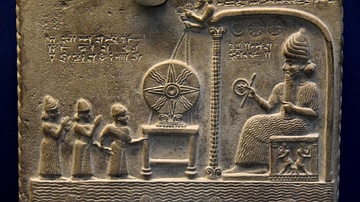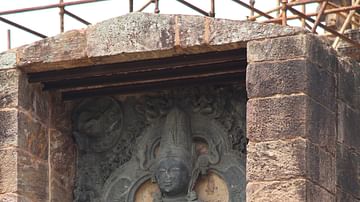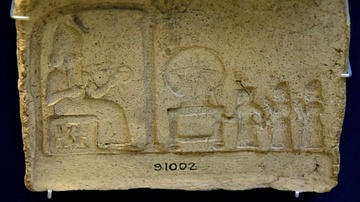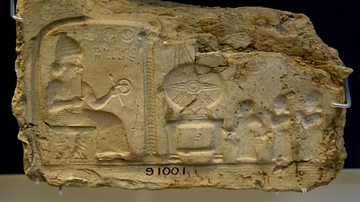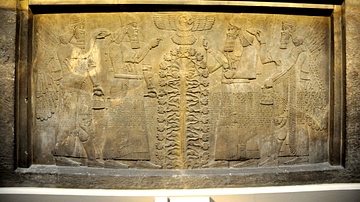Illustration
The Sun God tablet from the Temple of Shamash at Sippar, Southern Mesopotamia modern-day Iraq, Middle Babylonian Period, 860-850 BCE.
The upper part of the tablet has a carved panel. Nabu-nadin-shum (a priest) and the goddess Aa lead Nabu-apla-iddina (king of Babylon, r. 888-855 BCE) to a shrine. Within the shrine (Ebabbara), the Sun God, wearing a horned headdress, sits on a stool and holds a ringed rod in his right hand. Before him, a solar disc rests on an altar, which is supported by ropes held by attendant deities (which can be seen on the roof of the shrine). The whole shrine sits on what appears to be a heavenly ocean. Above the Sun god, symbols of Sin, Shamash, and Ishtar appear.
The cuneiform text on the obverse (and reverse side of the tablet, which is not shown here), records Nabu-apla-iddina's re-endowment of the Sun-Temple at Sippar. The tablet was rediscovered by the Neo-Babylonian king Nabopolassar (626-605 BCE) and an additional text was added to the tablet by him.
The British Museum, London.
About the Author
Cite This Work
APA Style
Amin, O. S. M. (2018, March 22). The Sun God Tablet or the Tablet of Shamash from Sippar. World History Encyclopedia. Retrieved from https://www.worldhistory.org/image/8411/the-sun-god-tablet-or-the-tablet-of-shamash-from-s/
Chicago Style
Amin, Osama Shukir Muhammed. "The Sun God Tablet or the Tablet of Shamash from Sippar." World History Encyclopedia. Last modified March 22, 2018. https://www.worldhistory.org/image/8411/the-sun-god-tablet-or-the-tablet-of-shamash-from-s/.
MLA Style
Amin, Osama Shukir Muhammed. "The Sun God Tablet or the Tablet of Shamash from Sippar." World History Encyclopedia. World History Encyclopedia, 22 Mar 2018, https://www.worldhistory.org/image/8411/the-sun-god-tablet-or-the-tablet-of-shamash-from-s/. Web. 07 May 2025.



